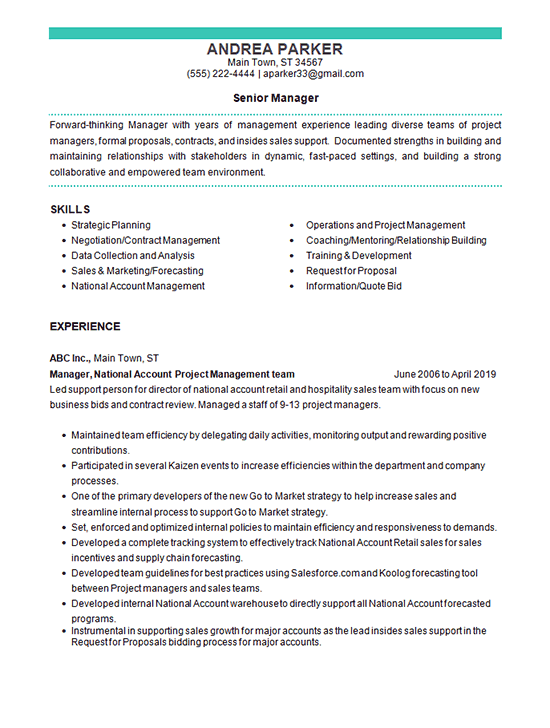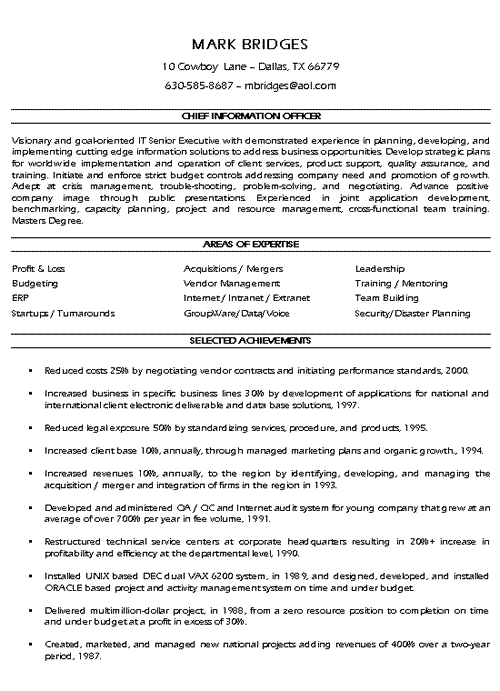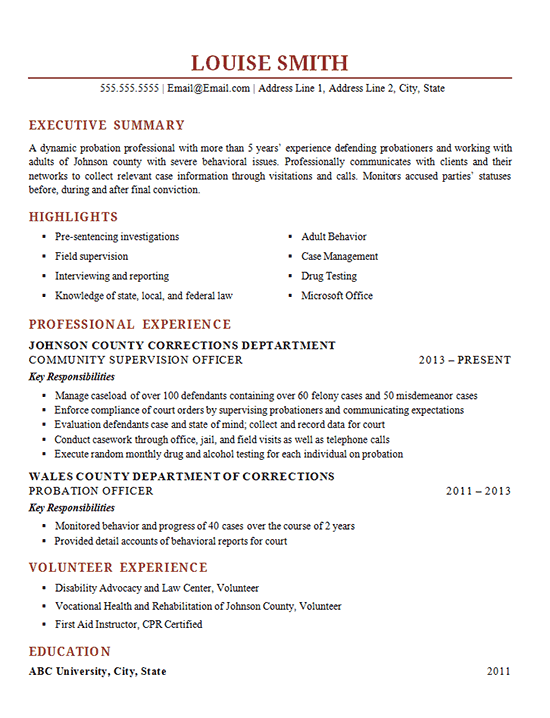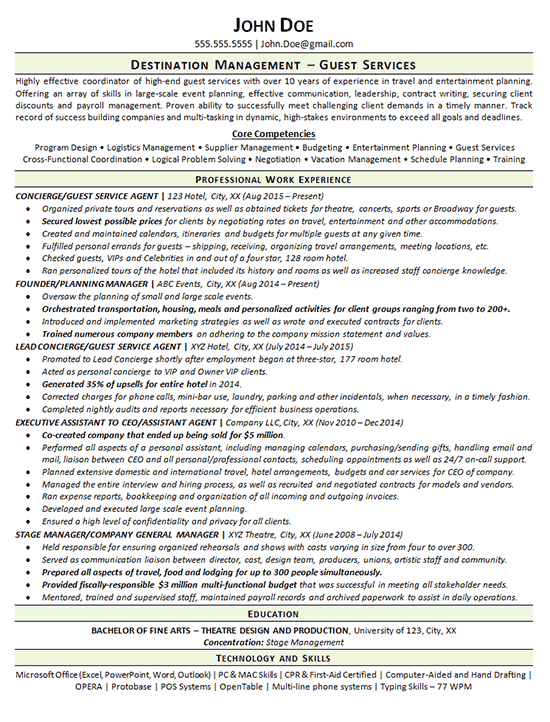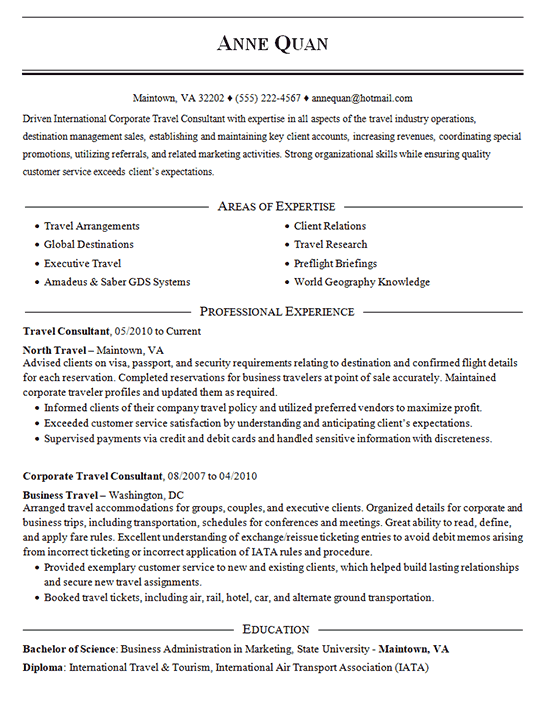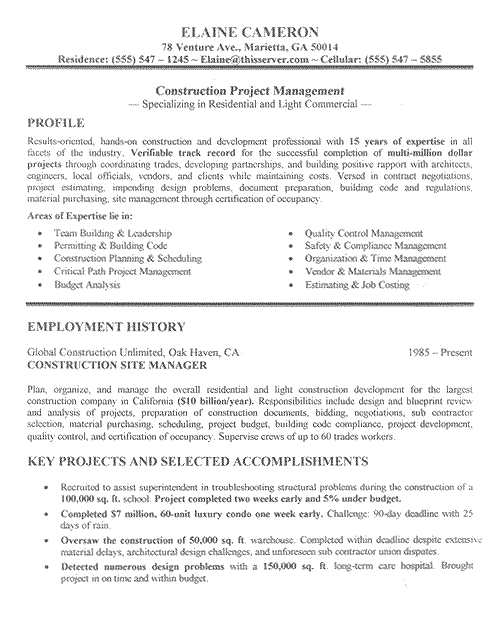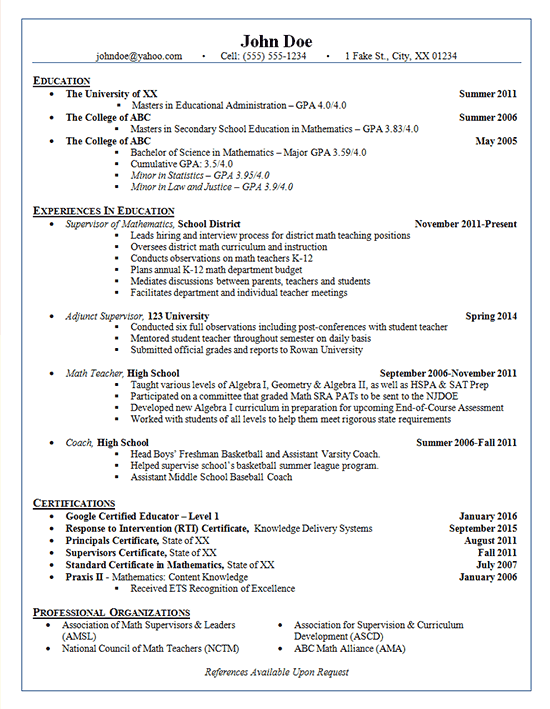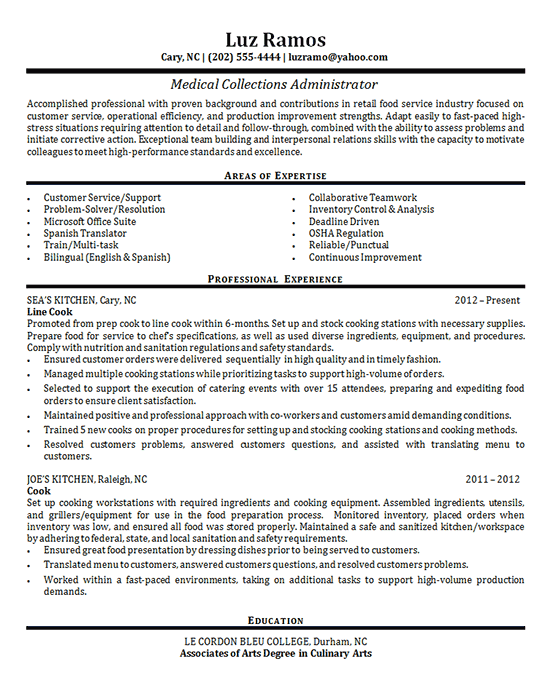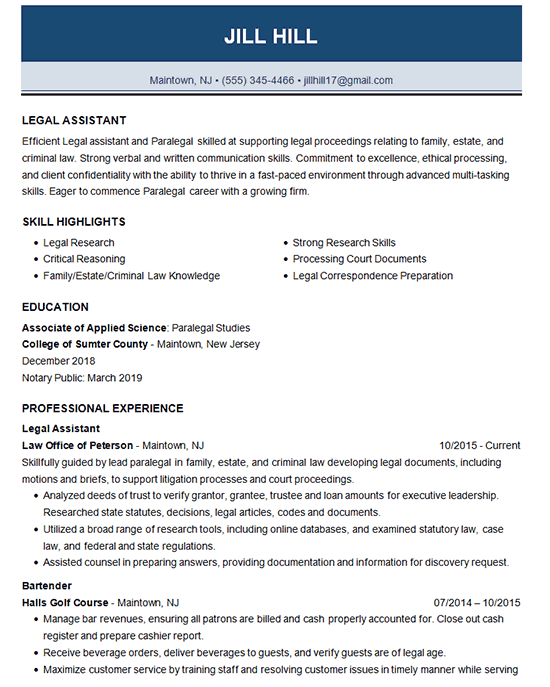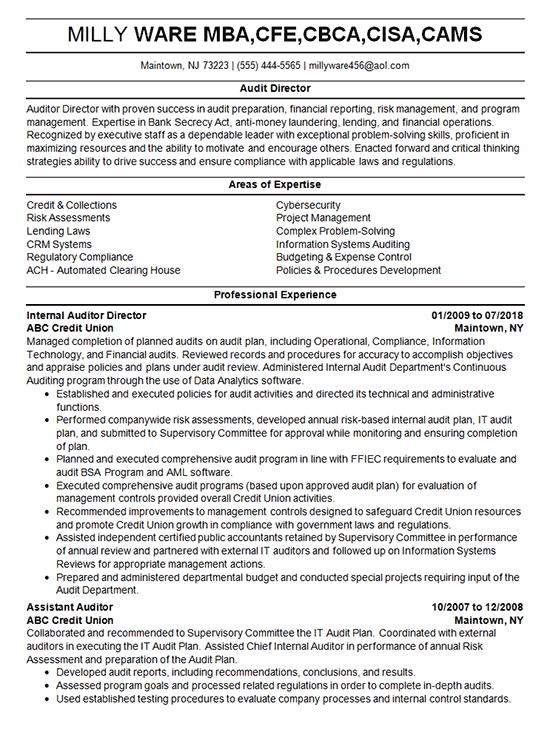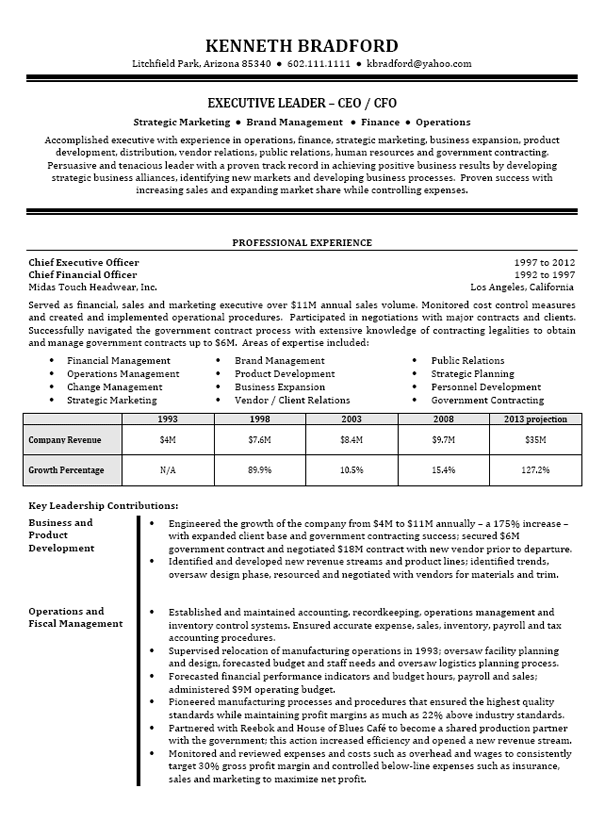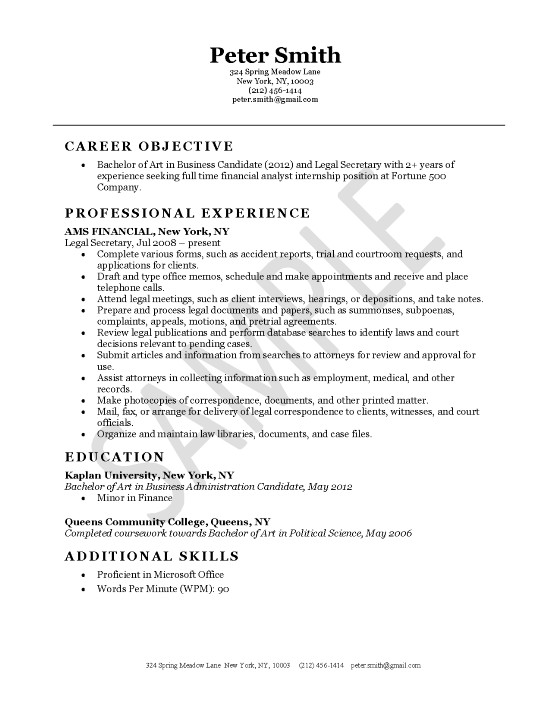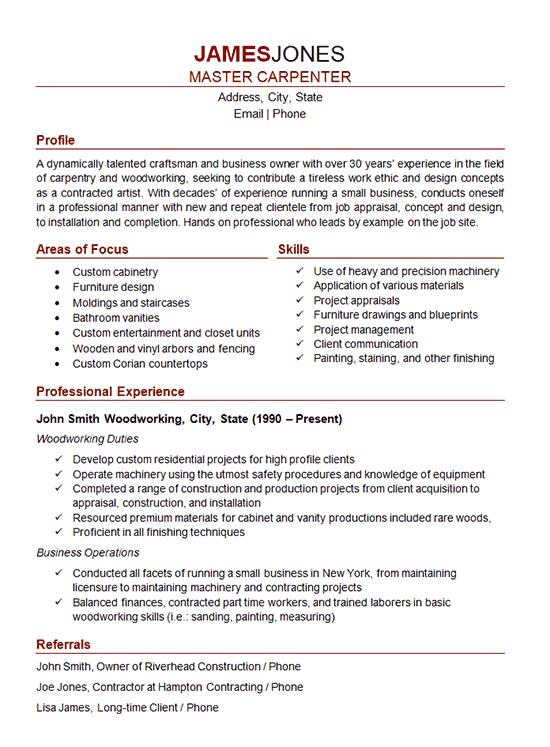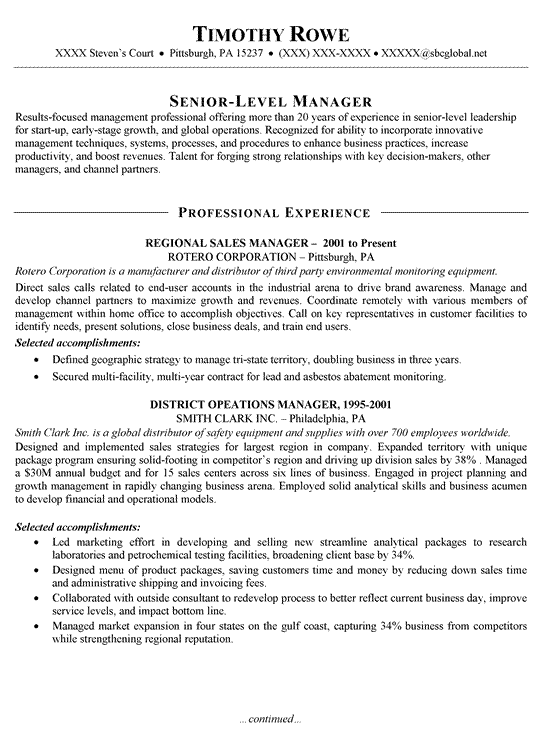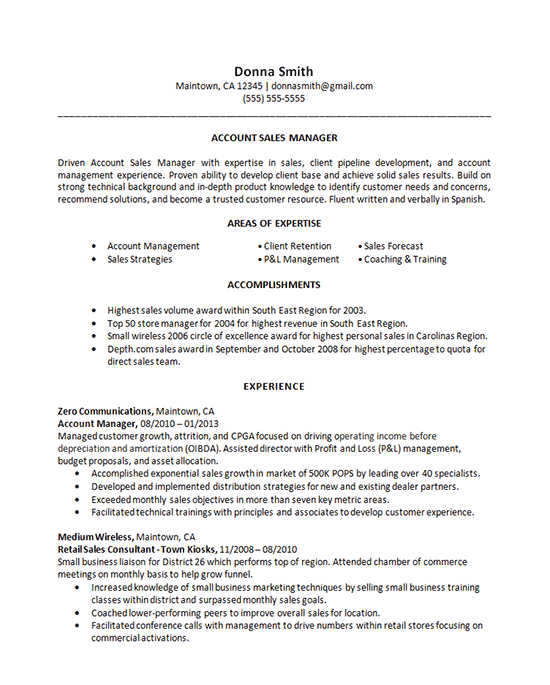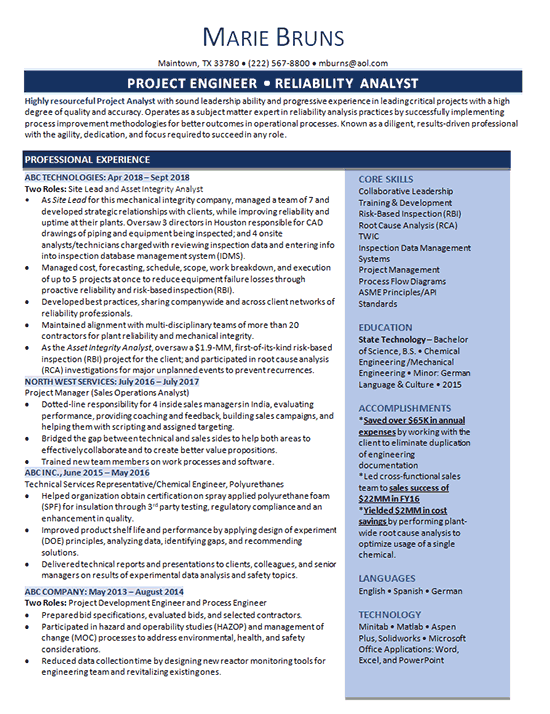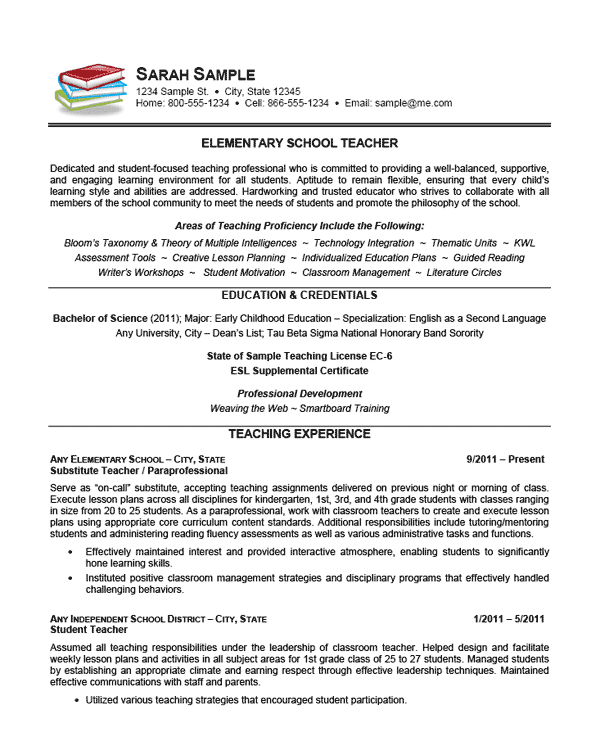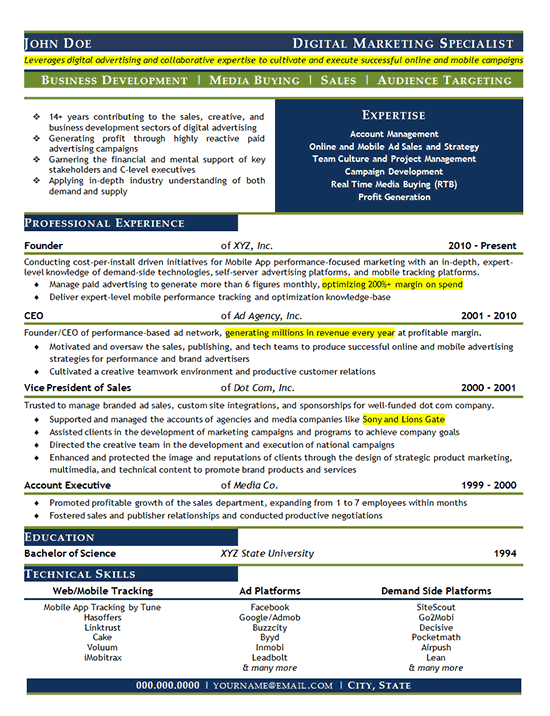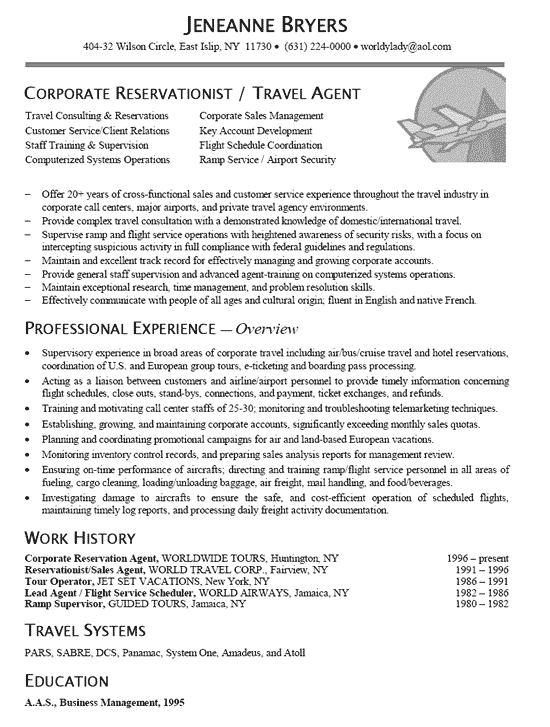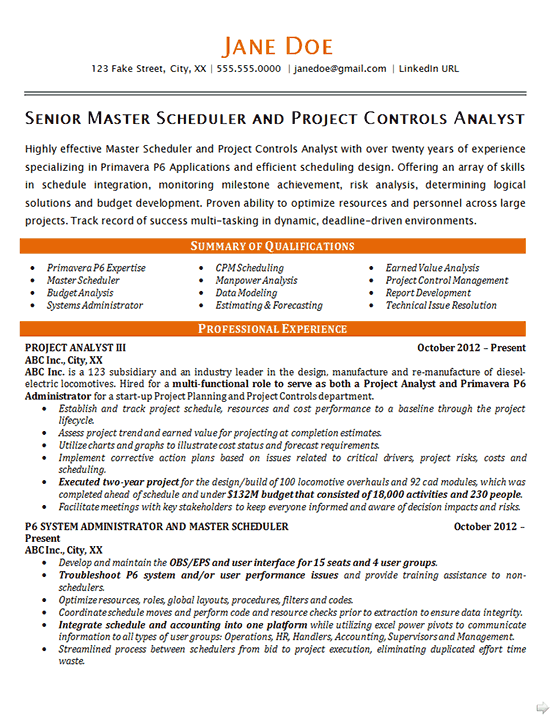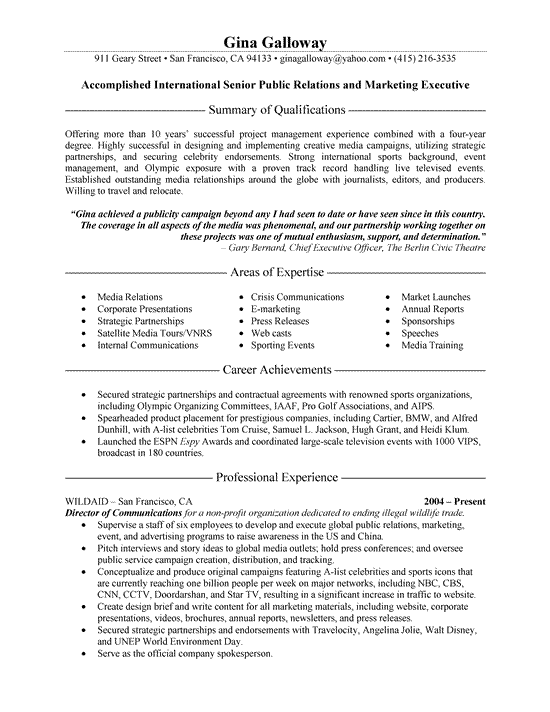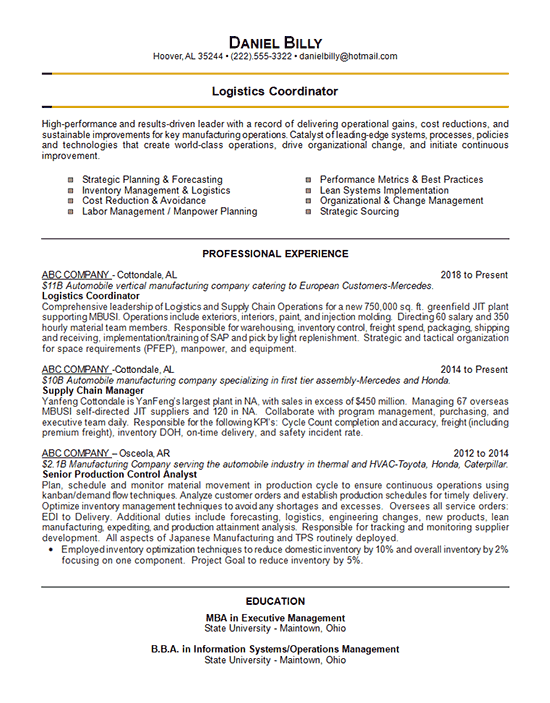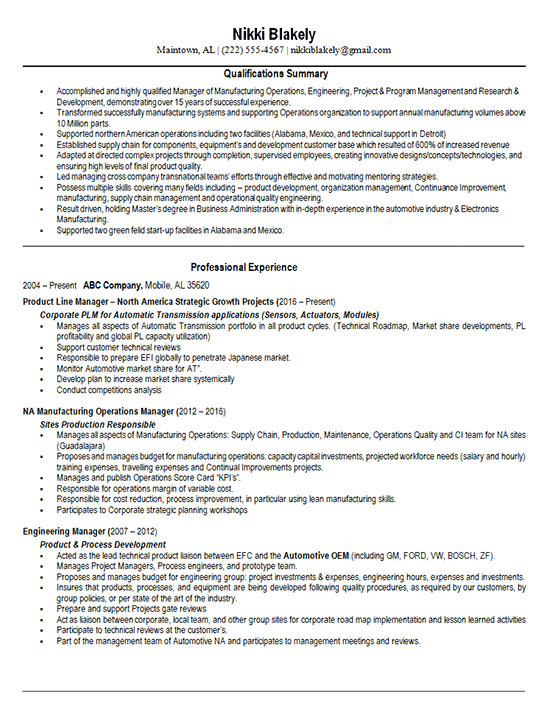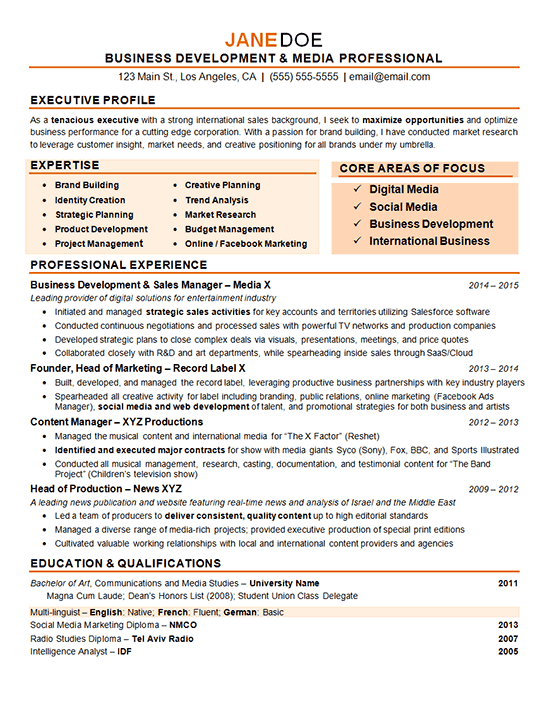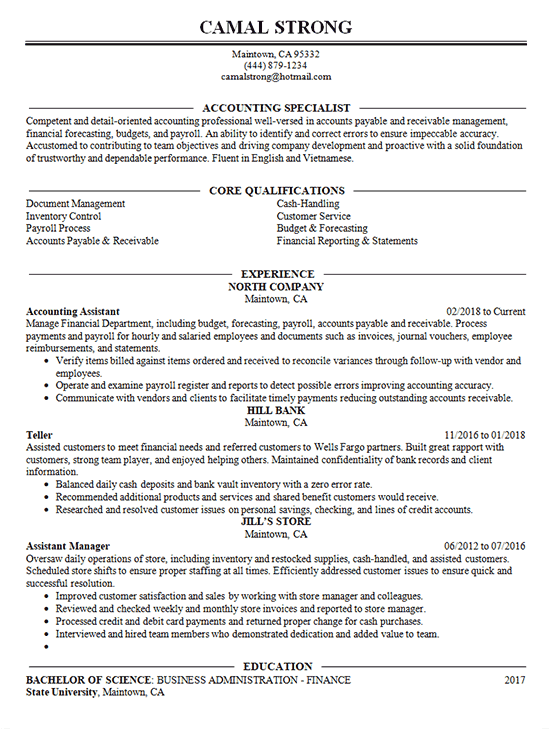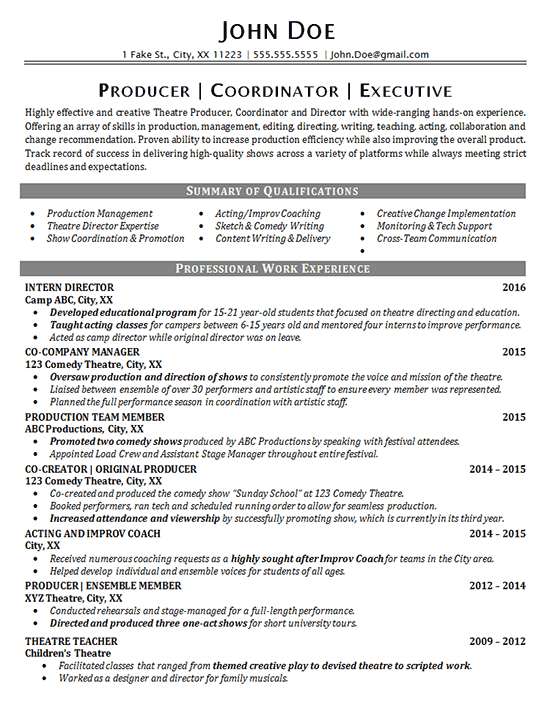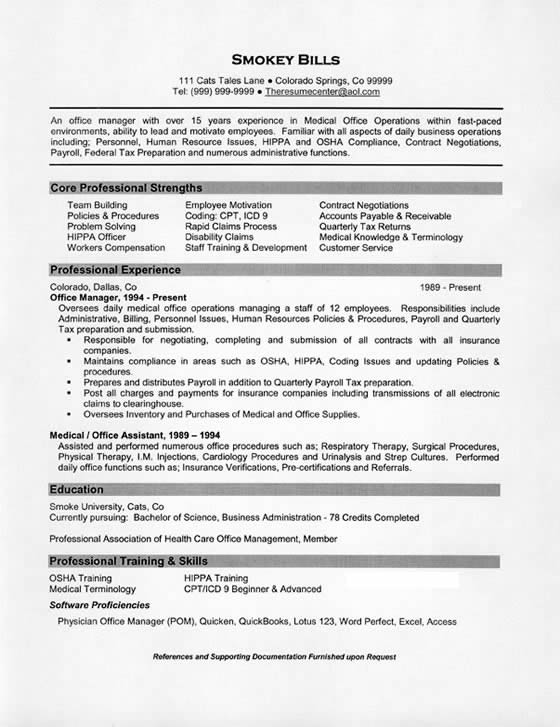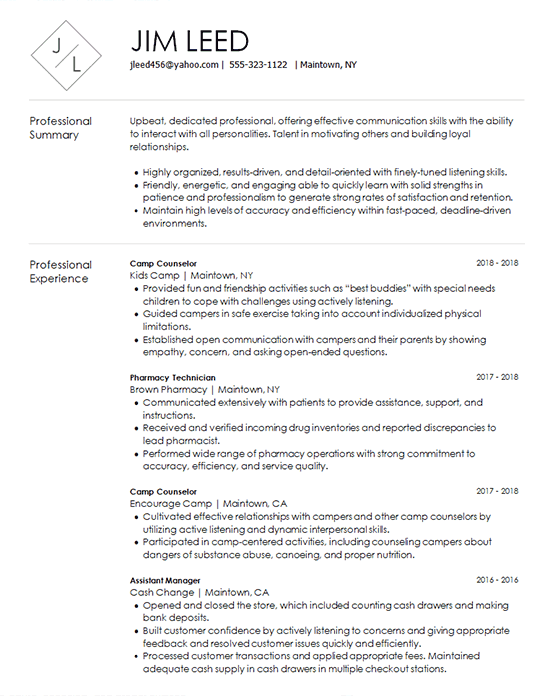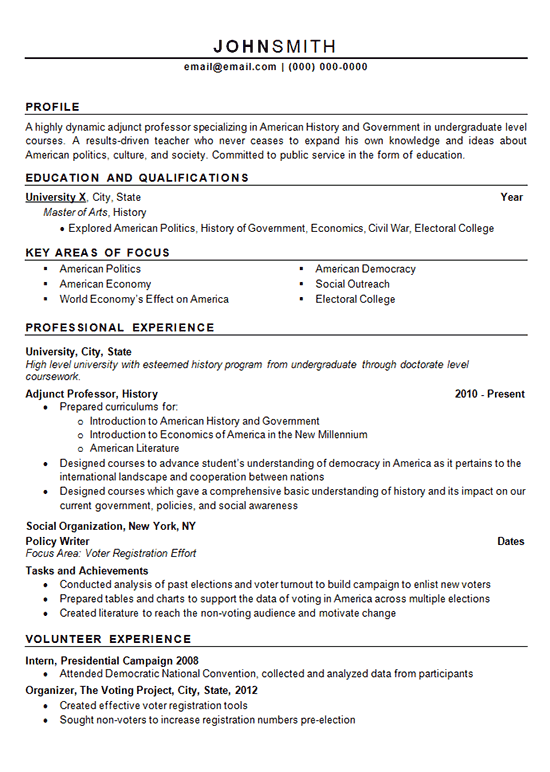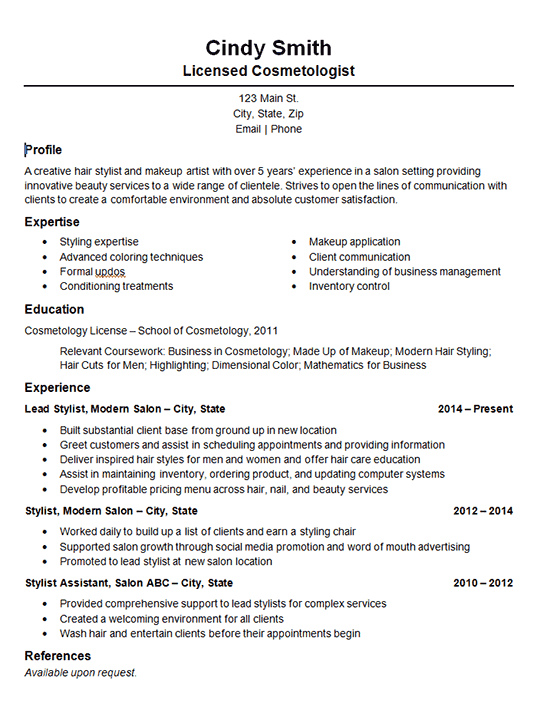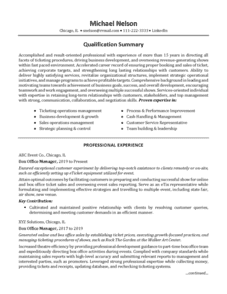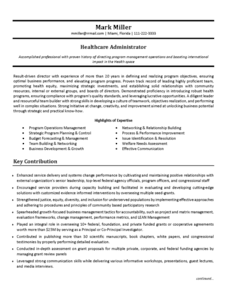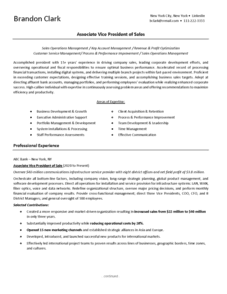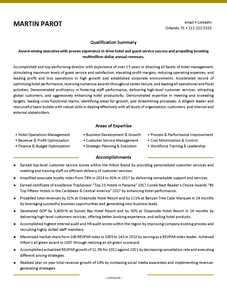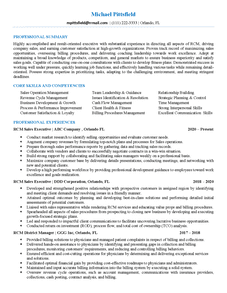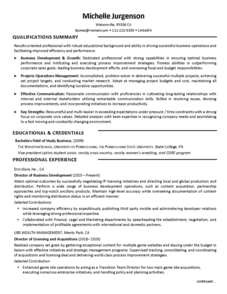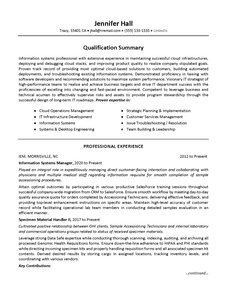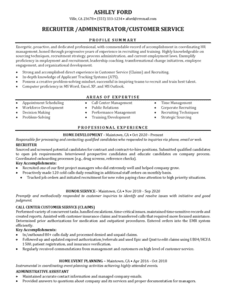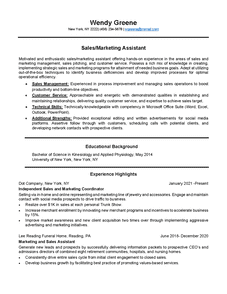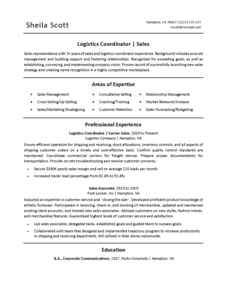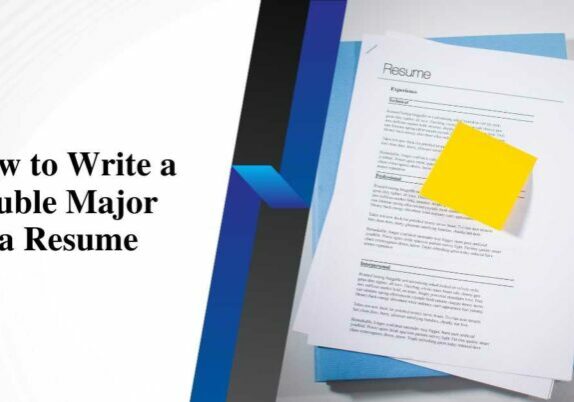This resume was created for a career Statistician hoping to receive a significant promotion, either within his current company or with a new company.
As a trained Statistician with a degree in Computer Science and an advanced degree in Statistics, this client has some very specific skills that are difficult for employers to find. The challenge is to best portray these skills to the reader.
The document begins with a good example of a resume objective statement to briefly point out some impressive qualities possessed by this client, such as SAS and Biostatistics. From there, Areas of Expertise were listed. The key here was to demonstrate that the job candidate is capable of high-level data analysis and experimental design.
It was important to convey that the job seeker was above entry level positions and ready for something more challenging. These Areas of Expertise hopefully get that message across.
The points in the Experience section were carefully chosen so that it highlights the wide range of applications that are successfully completed by the client on a daily basis.
Analytics is a growing field, so the writer had to be to include her experience with extrapolation, correlation, experiment & survey design and computer software.
To complete the resume, Education and relevant Certifications were document, including the impressive GPA.
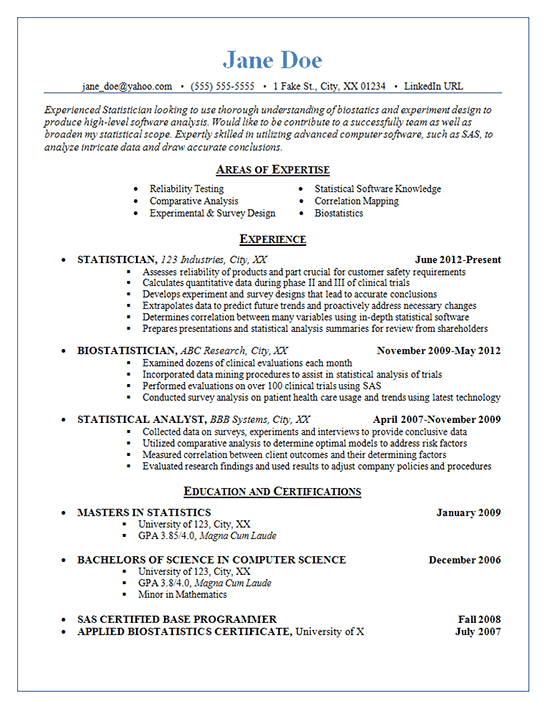
Statistician Resume Example
Statistician Resume Summary Statements
- Experienced Statistician looking to use thorough understanding of biostatistics and experiment design to produce high-level software analysis.
- Would like to be contribute to a successfully team as well as broaden my statistical scope.
- Expertly skilled in utilizing advanced computer software, such as SAS, to analyze intricate data and draw accurate conclusions.
Statistician Resume Experience Statements
- Assesses reliability of products and part crucial for customer safety requirements.
- Calculates quantitative data during phase II and III of clinical trials.
- Develops experiment and survey designs that lead to accurate conclusions.
- Extrapolates data to predict future trends and proactively address necessary changes.
- Determines correlation between many variables using in-depth statistical software.
- Prepares presentations and statistical analysis summaries for review from shareholders.
- Examined dozens of clinical evaluations each month.
- Incorporated data mining procedures to assist in statistical analysis of trials.
- Performed evaluations on over 100 clinical trials using SAS.
- Conducted survey analysis on patient health care usage and trends using latest technology.
- Collected data on surveys, experiments and interviews to provide conclusive data.
- Utilized comparative analysis to determine optimal models to address risk factors.
- Measured correlation between client outcomes and their determining factors.
- Evaluated research findings and used results to adjust company policies and procedures.
Statistician Resume Writing
Are you tired of endlessly scrolling through job boards, hoping to find the perfect opportunity as a statistician? Look no further! Our secret weapon to help you stand out from the competition is a killer statistician resume.
With this invaluable document in your arsenal, you’ll be able to showcase your skills, experience, and qualifications in a way that will make employers take notice. From your objective or summary to your education, work experience, and certifications, we’ll guide you through every step of the resume-writing process.
With our examples and tips, you’ll craft a resume highlighting your expertise in statistical theories, methodologies, and software tools like R or Python. Plus, we’ll show you how to emphasize your ability to analyze and interpret data, communicate findings effectively, and thrive in a collaborative team environment.
Get ready to take your career to the next level with a top-notch statistician resume!
What Does a Statistician Do?
So, you may be wondering, what exactly does a statistician do? As a statistician, your primary responsibility is to collect, analyze, and interpret data to help businesses and organizations make informed decisions. Your statistics and data analysis expertise allows you to provide valuable insights and recommendations based on your findings.
When writing your statistician resume, it’s essential to highlight your work experience, qualifications, and skills. Start by providing a summary of your experience as a statistician, including the number of years you’ve worked in the field. Be sure to include specific examples of projects you’ve worked on and the impact of your work.
In addition to your technical skills, communication skills are also crucial for a statistician. You need to be able to communicate your findings to both technical and non-technical audiences effectively. Include any experience you have with presenting data and creating reports.
Lastly, don’t forget to include a cover letter with your resume. This is your opportunity to showcase your passion for statistics and why you’re the best fit for the job. Emphasize your experience as an experienced statistician and how your skills and expertise align with the company’s needs.
As a statistician, your resume should highlight your skills and experience in data analysis, your communication skills, and your ability to make data-driven decisions.
What Does a Statistician Resume Include?
One interesting statistic highlighting the importance of a statistician’s resume is that job growth in this field is projected to be 33% from 2020 to 2030, much faster than the average for all occupations.
With such a promising outlook, statisticians must have a well-crafted resume that showcases their skills and expertise.
A statistician’s resume should typically include a resume template that highlights their qualifications and experiences. It should also feature a resume sample or examples of their previous work to demonstrate their data analysis and statistical modeling ability.
In addition to showcasing their educational background and work experience, a statistician’s resume should emphasize their analytical skills and proficiency in using statistical software and methods. Employers are particularly interested in candidates who are proficient in data collection and data analysis, as well as those who can apply statistical modeling techniques to solve complex problems.
A statistician’s resume should present a comprehensive overview of their skills, experiences, and accomplishments in the field. By highlighting their expertise in statistical methods and ability to analyze data, statisticians can increase their chances of landing their dream job in this rapidly growing field.
Statistician Resume Format and Sections
When crafting a standout statistician’s resume, choosing a format and sections that will effectively showcase your skills and experiences is important, allowing potential employers to envision your expertise in action.
The statistician resume format and sections should be strategically organized to highlight your relevant skills, work history, education, and experience.
Start with a header including your contact information and a professional summary briefly summarizing your qualifications.
Follow this with sections focusing on your technical, hard, and soft skills. In the technical skills section, list the statistical software and programming languages you’re proficient in.
The hard skills section should highlight your ability to analyze data, conduct experiments, and interpret results.
Lastly, in the soft skills section, emphasize your communication, problem-solving, and critical thinking abilities.
Next, include a work history section that details your previous positions and responsibilities. Be sure to highlight any projects or achievements demonstrating your statistical analysis proficiency.
Don’t forget to include relevant keywords in your application, such as machine learning, spss, sas, dataset, predictive modeling, and data quality.
Finally, include an education section that lists your degrees, certifications, and relevant coursework.
By following this statistician resume format and including the appropriate sections, you can effectively showcase your skills and experiences to potential employers and increase your chances of landing your dream job.
Common Statistician Resume Skills
Crafting a standout statistician’s resume is as easy as pie with these mind-blowing skills that will make employers drool over your qualifications.
A statistician resume example should highlight your strong statistical and analytical skills. These skills are crucial for analyzing and interpreting data and designing and implementing statistical models.
Employers also value candidates with certification in statistical techniques and data mining. Including these certifications on your professional resume will demonstrate your expertise and dedication to the field.
Additionally, showcasing your experience in predictive analytics and data science will impress recruiters seeking candidates with a strong foundation in quantitative analysis.
You will position yourself as a highly sought-after statistician by including these skills in your resume. So, don’t miss the opportunity to stand out from the competition and grab the attention of potential employers with your exceptional skills in statistical analysis and data science.
Pair Your Resume With a Matching Cover Letter
Enhance your chances of landing your dream job by pairing your impressive resume with a well-crafted cover letter that showcases your passion for statistical analysis and data science.
A cover letter is an excellent opportunity to highlight your skills and qualifications that align with the statistician position you’re applying for. It lets you explain how your experience and expertise make you a perfect fit for the job.
When writing your cover letter, it’s essential to tailor it to each potential employer and job description. Take the time to research the company and understand its needs and values. Use this information to demonstrate how you can contribute to their success. Make sure to mention specific skills and achievements from your statistician resume relevant to the position.
The letter should complement your resume, not repeat it. It provides an opportunity to expand on your resume summary and explain how your previous experiences have prepared you for the statistician role. Use the letter to highlight your passion for statistical analysis and data science and how you can apply your skills to benefit the hiring manager and the company as a whole.
By pairing your resume with a well-written letter, you show your attention to detail and dedication to the job application process. It demonstrates your commitment to the position and ability to communicate your qualifications to potential employers effectively. So, take the time to create a cover letter that grabs the hiring manager’s attention and sets you apart from other applicants.
Conclusion
In conclusion, crafting a well-structured and impressive statistician resume is crucial for enhancing your career prospects in the field of statistics.
By highlighting your skills, experience, and qualifications, you can showcase your expertise in statistical theories, methodologies, and software tools.
Remember to emphasize your ability to analyze and interpret data, effectively communicate findings, and work collaboratively in a team setting.
Don’t forget to pair your resume with a captivating cover letter to showcase your professionalism further.
With a standout resume, you’ll be one step closer to landing your dream job and becoming a statistical rockstar.
So, don’t wait – start polishing your resume now!

